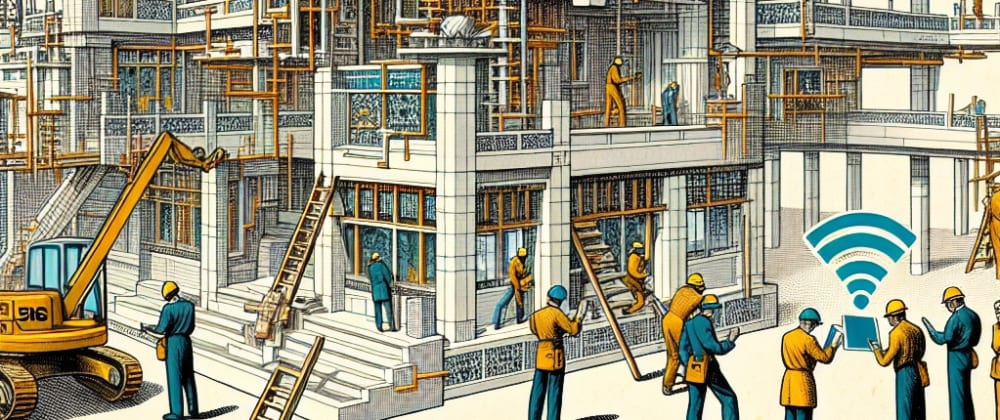How 5G Connectivity is Enhancing Construction Site Communication
Construction sites are inherently complex environments, bustling with activity, materials, machinery, and personnel. Effective communication is the backbone of a well-functioning construction site, directly influencing productivity, safety, and project timelines. Enter 5G technology, the fifth generation of mobile networks, which promises to revolutionize construction site communication in unprecedented ways.
The Evolution of Construction Site Communication
Traditionally, construction site communication has relied heavily on two-way radios, physical signage, and face-to-face interactions. While these methods have served the industry for decades, they come with limitations, such as:
- Limited Range: Traditional radios have a finite range, leading to potential communication gaps in larger sites.
- Interference Issues: Radio signals can be disrupted by physical barriers and electronic interference.
- Lack of Data Integration: These systems often operate in isolation, with no seamless integration with digital project management tools.
With the advent of 5G, these challenges are poised to become relics of the past.
What Makes 5G a Game-Changer?
5G technology brings several transformative benefits to construction site communication:
1. Ultra-Low Latency
Latency, the time it takes for data to travel from one point to another, is reduced to milliseconds with 5G. This near-instantaneous communication is crucial for real-time decision-making and coordination on construction sites. Imagine a construction manager being able to immediately relay an urgent instructions to a crane operator, preventing potential mishaps and ensuring safety.
2. Enhanced Bandwidth
5G offers significantly greater bandwidth compared to its predecessors, allowing for the transmission of large volumes of data. This means construction sites can seamlessly integrate high-definition video feeds, blueprints, and other large files into their daily operations. Drones equipped with 5G-enabled cameras can stream live video, providing project managers with an overhead view of the site's progress, enabling more informed decision-making.
3. Massive IoT Connectivity
One of the most exciting aspects of 5G is its ability to support a massive number of connected devices simultaneously. From smart helmets and wearable safety gear to IoT sensors embedded in machinery, 5G can facilitate a fully connected job site. These devices can monitor environmental conditions, equipment status, and worker health in real-time, ensuring optimal efficiency and safety.
4. Improved Reliability
5G networks are designed to be more reliable and resilient to interference, ensuring consistent connectivity across the entire construction site. This reliability reduces downtime caused by communication failures and supports uninterrupted workflow.
Real-World Applications of 5G in Construction
Remote and Real-Time Monitoring
With 5G, remote monitoring of construction sites becomes more efficient and detailed. Project managers can use 5G-enabled cameras and drones to inspect work progress from any location. This capability is particularly valuable for large, sprawling sites or in situations where travel to the site is restricted.
Augmented Reality (AR) and Virtual Reality (VR)
5G's high bandwidth and low latency enable the effective use of AR and VR technologies on construction sites. AR can guide workers through complex tasks with overlayed instructions, while VR can offer immersive training environments, simulating real-world scenarios without the associated risks.
Automation and Robotics
5G's robust connectivity supports the deployment of autonomous machinery and robotics on construction sites. These machines can perform repetitive or hazardous tasks with precision, reducing the risk of human error and enhancing overall productivity.
Challenges and Considerations
While the benefits of 5G are immense, it's also important to consider potential challenges:
- Infrastructure Investment: Upgrading to 5G requires a significant investment in infrastructure and compatible devices.
- Cybersecurity Risks: With increased connectivity comes the heightened risk of cyber-attacks. Robust security measures must be implemented to protect sensitive data.
- Skill Development: The workforce needs to be trained to effectively use and leverage new 5G-enabled technologies.
Conclusion
The infusion of 5G technology into the construction industry marks a profound leap towards smarter, safer, and more efficient job sites. By enabling ultra-low latency, enhanced bandwidth, massive IoT connectivity, and improved reliability, 5G is set to redefine how construction projects are managed and executed. The future of construction is highly connected and incredibly promising, thanks to the transformative power of 5G.
Stay tuned, innovators, because the construction site of tomorrow is almost here, and it's going to be revolutionary!







Top comments (0)